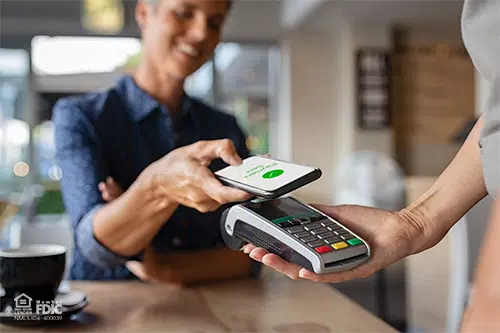Is it not all about the Benjamins anymore? Consumers making purchases with cash are becoming less and less common. According to Euromonitor, cash represented just 16% of all consumer payments in 2022. Purchasers are moving toward using digital wallets, smartphone-enabled payment platforms that can be used almost anywhere you would swipe or tap a credit or debit card. When you purchase with Apple Pay, Google Pay, or Samsung Pay, a unique virtual token transmits your payment so that your card number and identity aren't shared with merchants. The U.S. is lagging behind other countries for mobile payment adoption, however. Market research company Statista says the adoption rate of mobile payments among mobile internet users in China was over 85%, representing a user base of 911 million, vs.32% for the U.S. So why the reluctance?
One reason the U.S. is slow to adapt is that credit and debit cards are widely accepted. Even though consumers can choose from various smartphone payment options, the convenience of swiping a card is still attractive to buyers. According to a 2022 Equifax survey, Americans received 11.5 million new bank credit cards through February 2022. This is a 31.4% increase from the same period. Despite over 85% of U.S. retailers being set up to accept Apple Pay, only 6% of the users with access use it.
Another reason for the slow adoption is safety concerns. A 2019 Pew survey found 38% of respondents thought that mobile payments are "poorly protected." The fact is, digital wallets can be safer and more secure than the cards in your wallet. If you lose your wallet, it's gone, and your credit cards could be in the hands of a bad actor. To protect yourself, you must cancel all your cards, which can be difficult and time-consuming. If you lose your phone, it's more difficult for hackers to access your digital information without a password and biometric authentication (thumbprint or facial recognition). All your information is stored in a cloud, and when you get a replacement phone, you download the data. And the financial data used in a digital wallet account is encrypted, meaning the transaction data is "hidden" in a randomly generated code that conceals it and makes it useless to hackers.
You can do some things to ensure your digital wallet's safety further. Here are four of them:
- Avoid doing transactions on public Wi-Fi. You don't know the network's security, and it may be a rogue network set up to gain access to your device.
- Only download reputable digital payment apps. There are many apps to choose from; use only ones that most retailers and purchasers recognize.
- Keep your phone's security features up to date. Turn on all security features on your phone and update whenever there's a new software version. Make sure to set up biometric authentication.
- Be observant and cautious. Check your accounts frequently for any unusual activity or transactions. Avoid clicking on links on emails, texts, or social posts you don't know the source.
Once digital wallet adoption becomes more accepted in the U.S., we can expect more retailers to embrace the technology and increase its usage. Click here to learn more about the digital wallet products available with a NASB account, or give us a call at 800-677-6272.




